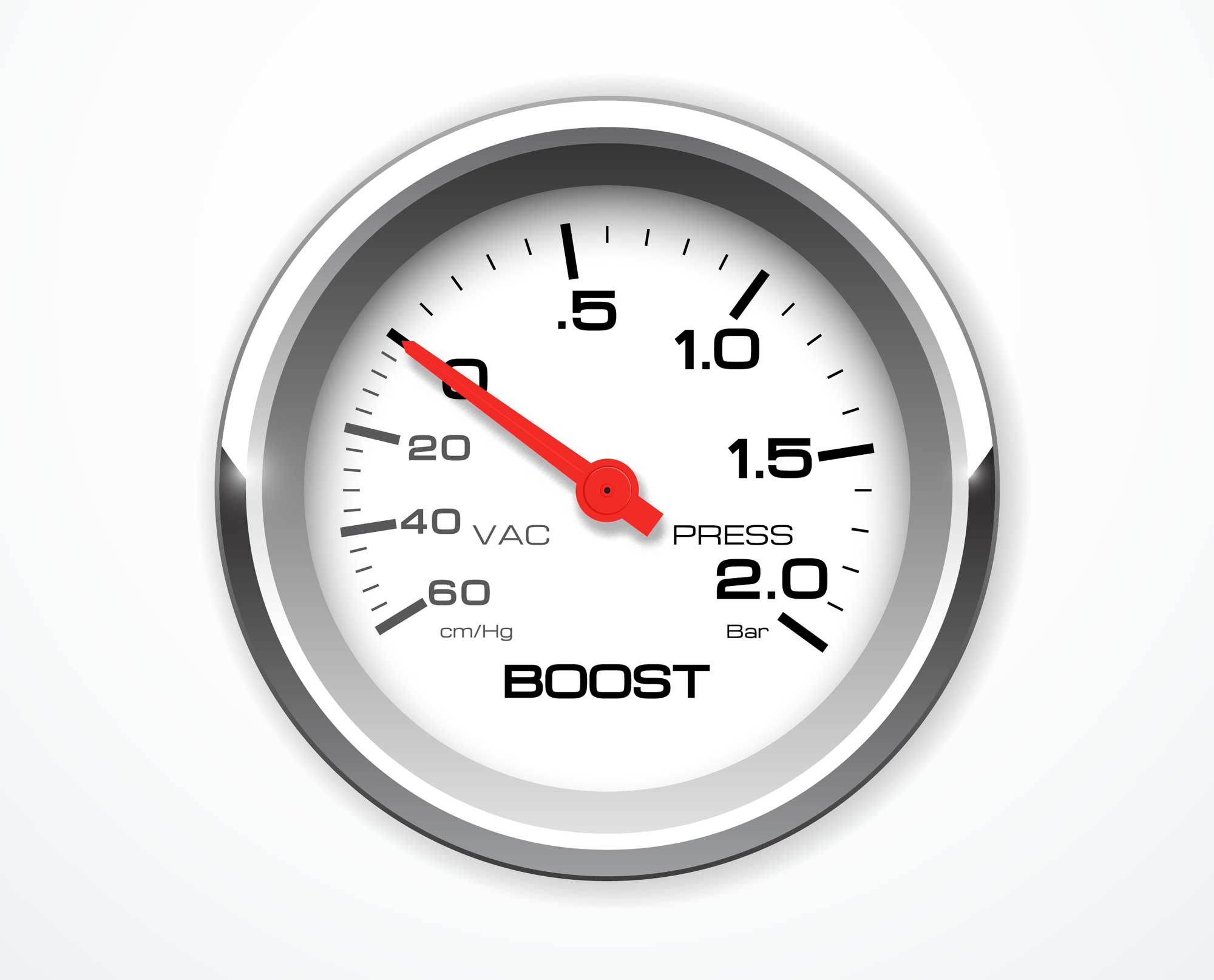Boost Pressure

Boost pressure refers to the level of pressure generated by a turbocharger or supercharger in a car’s engine intake manifold. It represents the additional air pressure forced into the engine’s cylinders, which enhances the engine’s power output.
Engine Performance:
Boost pressure significantly influences an engine’s performance by increasing the amount of air available for combustion. This allows more fuel to burn efficiently, resulting in higher power output and improved overall performance.
Turbocharger/Supercharger Functionality:
Boost pressure is directly related to the functioning of turbochargers or superchargers, which are designed to compress air and increase its density before it enters the engine. This compressed air leads to improved engine power and efficiency.
Boost pressure significantly influences an engine’s performance by increasing the amount of air available for combustion. This allows more fuel to burn efficiently, resulting in higher power output and improved overall performance.
Turbocharger/Supercharger Functionality:
Boost pressure is directly related to the functioning of turbochargers or superchargers, which are designed to compress air and increase its density before it enters the engine. This compressed air leads to improved engine power and efficiency.
Boost pressure is typically measured at the intake manifold, where the pressurized air from the turbocharger or supercharger enters the engine. This location provides a direct indication of the pressure being delivered to the engine cylinders.
Boost pressure becomes relevant during acceleration or when the engine requires additional power. Turbochargers or superchargers engage to increase the intake air pressure, boosting the engine’s performance.
Electronic Control:
Modern cars utilize electronic control systems to regulate boost pressure. These systems adjust the wastegate (in turbochargers) or bypass valve (in superchargers) to manage and maintain the desired pressure levels.
Tuning and Modifications:
Car enthusiasts often modify the boost pressure to enhance engine performance, either through aftermarket parts or custom tuning. However, modifying boost pressure requires careful calibration to prevent engine damage.
Modern cars utilize electronic control systems to regulate boost pressure. These systems adjust the wastegate (in turbochargers) or bypass valve (in superchargers) to manage and maintain the desired pressure levels.
Tuning and Modifications:
Car enthusiasts often modify the boost pressure to enhance engine performance, either through aftermarket parts or custom tuning. However, modifying boost pressure requires careful calibration to prevent engine damage.


